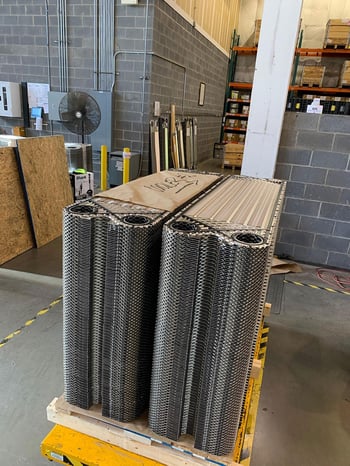Extend the Life of Your Heat Transfer Plates in 4 Easy Steps
Sign Up for Maintenance Tips
Posted on Jan 18, 2022 10:00:00 AM by Penny Vander Velden | 2 min. read
It’s nearly impossible to prevent your equipment from breaking down over time. But there are ways to delay the threat that age poses to your heat exchanger. If you know the right ways to take care of your equipment, you’ll be able to significantly extend its lifespan.
These four easy steps can help you get the most out of your heat transfer plates.
1) Schedule Routine Cleaning

The efficiency of a heat exchanger depends heavily on its fouling factor. Fouling is the result of sludge, grime, or unwanted materials building up on the plates. Over time, this buildup lowers the flow rate and puts a damper on your heat exchanger’s performance.
It’s critical to complete your scheduled CIP cleanings on time. Not sure what all should go into these regular cleanings? Find out what we recommend to look for and check during each cleaning cycle.
2) Commit to Periodic Maintenance
If you’re looking to stay ahead of the curve and keep your heat exchanger at maximum heat transfer efficiency, let the professionals keep it in shape. Our team will inspect all of the main components of your heat exchanger, including the condition of your plates and gaskets, and ensure that everything is installed and functioning properly.
 We also keep a running tally of how your equipment is wearing over time. This information is not only handy for an audit, but will help determine when you’ll need to purchase replacement parts so that you can budget accordingly.
We also keep a running tally of how your equipment is wearing over time. This information is not only handy for an audit, but will help determine when you’ll need to purchase replacement parts so that you can budget accordingly.
3) Don't Push Through Slow Flow Rates
Heat exchangers should always be performing at an optimal rate. If you are experiencing slower-than-average flow rates, it’s time to call in the professionals.
Oftentimes, slow flow rates indicate that the unit is not cleaning properly or needs to be re-streamed to accommodate your current product. Rather than increasing the flow rate speed, make sure to get to the heart of the issue as soon as possible, to preserve the life of your equipment.
4) Plan Ahead for Production Changes
If you’ve made changes to your product mix and the same liquid is no longer streaming through your heat exchanger, it’s always best to have a professional come out and ensure that the equipment is set for the new product. For example, if a cheese plant adds a fortifying powder to their milk, the flow exchange will likely change, and your equipment will require adjustments to process your new product efficiently.
If you are looking to make changes to your production process, let us know ahead of time — we can test samples at no cost to you to see if changes will be required.
It All Comes Down to Being Proactive
By knowing when to call in the pros, you can keep it running at its highest heat transfer efficiency for years to come. Get a free quote from AGC today to stay ahead of routine maintenance and potential issues.
Topics: Maintenance | Service

